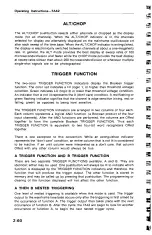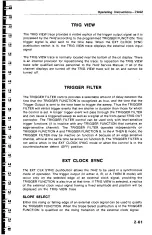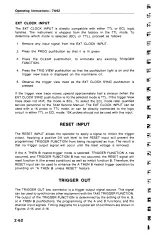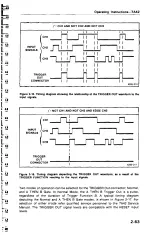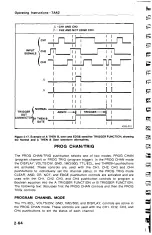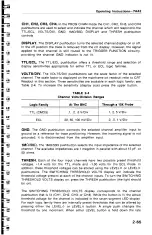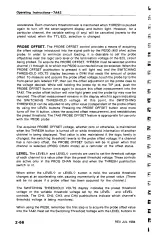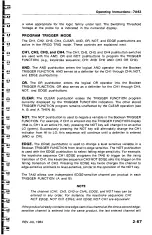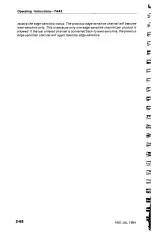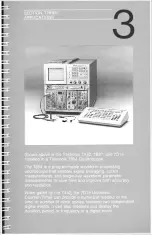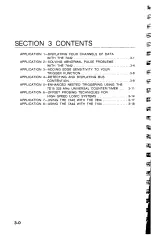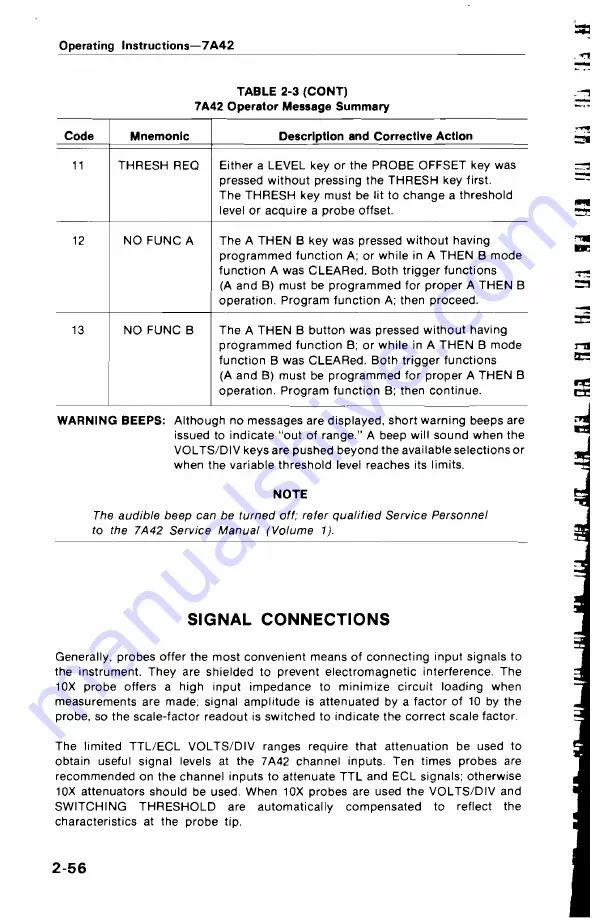
Operating Instructions—7A42
TABLE
2-3 (CONT)
7A42 Operator Message Summary
Code
Mnemonic
Description
and Corrective Action
11
THRESH
REQ
Either
a
LEVEL
key or
the
PROBE
OFFSET
key
was
pressed
without
pressing
the
THRESH
key
first.
The
THRESH
key
must
be lit
to
change a
threshold
level or
acquire
a
probe
offset.
12
NO FUNC
A
The
A
THEN
B key was
pressed without having
programmed
function
A;
or
while
in
A
THEN
B
mode
function
A
was
CLEARed.
Both
trigger
functions
(A
and
B)
must
be
programmed
for
proper
A
THEN B
operation.
Program
function
A; then
proceed.
13
NO
FUNC
B
The
A
THEN
B
button
was
pressed
without
having
programmed
function
B; or
while
in
A
THEN
B
mode
function
B
was
CLEARed.
Both
trigger
functions
(A
and
B) must
be
programmed
for
proper
A
THEN
B
operation.
Program
function
B; then
continue.
WARNING BEEPS:
Although
no
messages are
displayed,
short
warning
beeps
are
issued
to indicate “
out
of
range." A
beep
will
sound
when
the
VOLTS/DIV
keys
are
pushed
beyond
the
available
selections
or
when
the
variable
threshold
level
reaches
its
limits.
NOTE
The
audible beep
can be turned off; refer qualified Service Personnel
to
the 7A42 Service
Manual (Volume 1 ).
SIGNAL
CONNECTIONS
Generally,
probes
offer
the
most
convenient
means
of
connecting
input
signals
to
the
instrument.
They are
shielded
to prevent
electromagnetic
interference.
The
10X
probe
offers
a
high
input
impedance
to
minimize
circuit
loading when
measurements
are
made;
signal
amplitude
is attenuated
by
a
factor
of
10
by
the
probe,
so
the
scale-factor
readout is switched
to
indicate
the
correct
scale
factor.
The
limited TTL/ECL
VOLTS/DIV
ranges
require
that
attenuation
be
used
to
obtain
useful
signal levels at
the
7A42
channel
inputs.
Ten
times
probes
are
recommended
on the
channel
inputs
to
attenuate
TTL
and
ECL
signals;
otherwise
10X
attenuators
should
be
used. When
10X
probes
are
used
the
VOLTS/DIV
and
SWITCHING
THRESHOLD
are
automatically
compensated
to
reflect
the
characteristics
at
the
probe
tip.
2-56



















